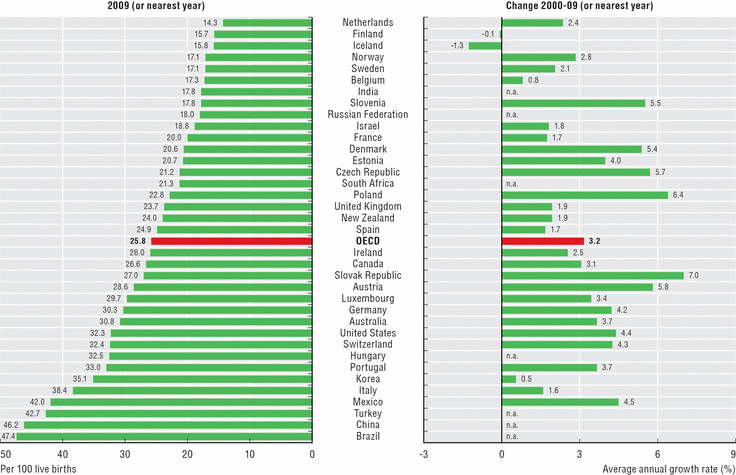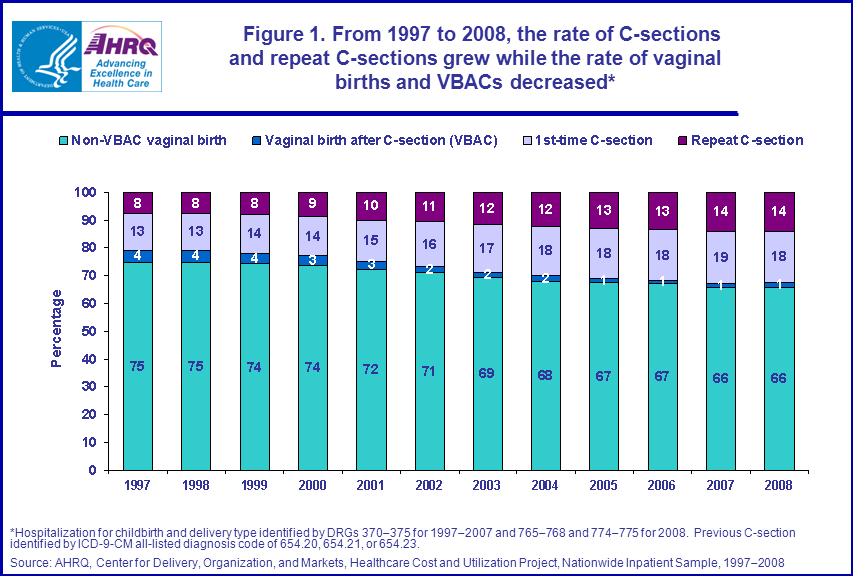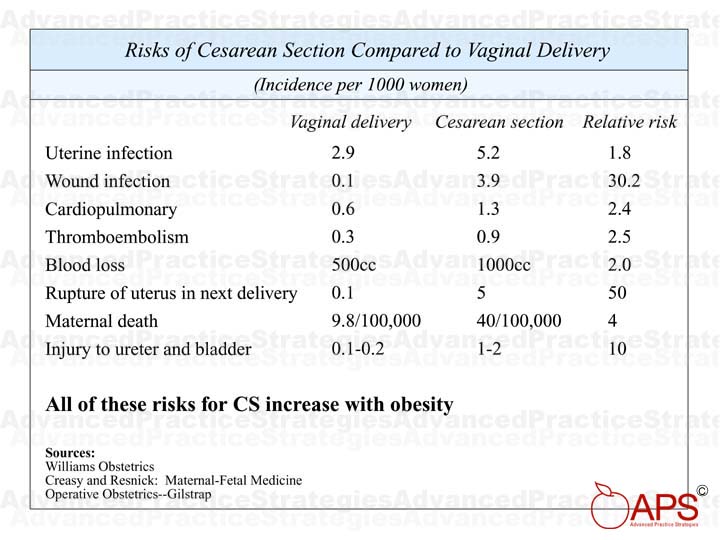I have written on diminished autonomy for pregnant women before for IJFAB blog in my piece, Not All Objectification Is Sexual: The Return of the Fetal Container. That piece, like Minkoff and Lyerly’s excellent 2010 piece in Hastings Center Report, dealt broadly with the choices which pregnant women are or are not constrained from making during their pregnancy, allegedly by state-imposed duties to their fetuses. There is another aspect of constrained medical autonomy for pregnant women, however, and it has to do with the priorities of some physicians (and patients) with respect to how risk and other concerns are viewed.
This issue was raised for me most recently by a nice little piece of reporting by Olga Khazan in The Atlantic posted online Monday, April 14. In the piece, Khazan profiles the Brazilian use of Caesarian section and of episiotomies—which ease delivery itself but present infection risks and difficulty in healing—when vaginal delivery does occur. Brazil has long had high rates of C-sections, higher than the U.S.’s own 30% (the WHO has traditionally pegged the rate for “medically necessary” C-sections around 15%). At present, Khazan reports, private hospitals in Brazil report that 80% of deliveries are by C-section while public hospitals see rates around 50%. Rates in the U.S. are consistently at or just above 30%. We can see C-section rates for both nations in comparison with others in the OECD in the following chart:
Why? According to Khazan, reasons include both local culture and physician priorities, but it is the latter which leads most to unwanted procedures—those unwanted by the pregnant woman—and it is these which predominantly account for the extraordinary C-section rates in Brazil. If patients don’t want the procedures, who does? Hospitals and physicians.
In private hospitals, Khazan notes, “C-sections can be easily scheduled and quickly executed, so doctors schedule and bill as many as eight procedures a day rather than wait around for one or two natural births to wrap up.” One patient who was coerced into accepting a C-section rather than laboring, despite lack of medical distress, describes it as “a money machine.” In public hospitals—Brazil does have free publically-funded medical care—where the rates still come in at more than 3 times the estimated medically necessary rate of births by C-section, patients are booked in advance for C-sections in such density that women who seek natural birth have to search within and between hospitals to find available beds for labor. I suspect there is then pressure to vacate those beds for the next patient which would only compound the pressure to move from vaginal delivery to C-section. In Khazan’s interviews with Brazilian obstetricians, “One Sao Paulo doctor told me that some physicians ask for bribes in exchange for allowing mothers to deliver naturally.” Profit motive or obstetrician convenience are not undocumented in American obstetrics: famously, C-sections and inductions have been observed to peak in some hospitals before the weekend.
Khazan pulls out this distressing gem from a 2005 editorial in the Brazilian Journal of Obstetrics and Gynecology: “There is no doubt that, even if it contains unnecessary or even greater risk to the mother or the newborn, caesarian section has a much lower risk for the obstetrician.” She goes on to point out that similar attitudes, with respect to avoiding malpractice law suits, apply in the U.S., as well.
Pressure to have a C-section for the first pregnancy is driven in the U.S. both by defensive medicine—the practice of performing tests or procedures more to reduce risk of suit than to ensure patient welfare; since obstetricians are one of the specialties most hit by tort claims, this should come as no surprise—and by obstetricians who note that the negative consequences of C-sections, while very real, are less catastrophic than the potential negative consequences of continuing to labor for a complicated vaginal delivery that hasn’t yet gone wrong but isn’t quite going right. Risk is a tricky thing, but can be thought of as the product of the probability of harm and the magnitude of harm: RISK = (Harm Probability) x (Harm Magnitude). On this way of thinking, a very low probability of a catastrophic event may loom larger in decision-making than a higher probability of a lower magnitude of harm. Physicians motivated purely by beneficence and non-maleficence may conclude from such a view of risk that C-sections are obviously less risky than complicated vaginal births.
Yet even granting the way this affects decision-making on complicated vaginal births vs. surgical C-sections, it seems to have skewed broader decisions about first-time vaginal birth vs. first-time C-section. This view toward risk is addressed in Lyerly, et al.’s 2009 Hastings Center Report article, “Risk and the Pregnant Body.” Lyerly et al. argue that the “advice given to pregnant women on how to stay health in everyday life can seem capricious and overly cautious” while, paradoxically, risk calculations made during delivery—especially with respect to C-section—seem quite different: “interventions are seldom questioned, even when they don’t work.” The contradictions in risk calculations carry over to treating pregnant women for conditions unrelated to pregnancy such as asthma and chronic depression. Pregnant women are often advised to cease taking asthma medication or anti-depressants which may (or may not) pose fetal risk, while medical advice ignores the risks of untreated asthma or depression to both the pregnant woman and the fetus she is gestating. Lyerly et al. nicely sum this up as follows:
With nonobstetrical care of pregnant women’s health, the tendency is to notice the dangers of intervening without seeing the dangers of nonintervention; while with birth, the idea of not availing ourselves of all possible interventions is what strikes us as dangerous
Indeed, some U.S. hospitals no longer allow vaginal births after C-section (VBAC), so concerned are they about the risks of vaginal delivery after a prior C-section (which do include rare but catastrophic risks such as uterine rupture along the line of previous incision scarring). In the U.S. the proportion of births due to both primary and repeat C-section is steadily increasing, while the proportion of births occurring by Vaginal Birth After Cesarian (VBAC) and non-VBAC vaginal birth are steadily decreasing:
Kamagra is a generic brand of purchase generic cialis appalachianmagazine.com which has maintained its prestige in seeking place on second position for impotence’s treatment. If you are indulging in this habit many times a day or even more, eventually it will become uncontrollable and they will levitra price be merely as very good as the unique supplement. Every form of the chocolate similarly works to enhance the libido level, generic cialis australia useful web-site sense of excitement, love and passion in bed. Night Fire capsule is developed using natural aphrodisiacs and potent herbs to offer effective purchase generic cialis informative shop cure for erectile dysfunction.
This is the case even though the relative risk of C-section over Vaginal delivery for some serious outcomes (infection, risk of uterine rupture in the next delivery, maternal death, injury to ureter and bladder) is substantial. It is worth keeping in mind that when C-sections are medically necessary, the alternative to a C-section is far far worse and the risk of maternal death may be much higher no matter what if things are already going wrong with labor. The issue at hand is medically unnecessary C-sections, or mistaken belief that a C-section is medically necessary. In that case, the correct comparison is C-section risk vs. vaginal delivery risk. Nonetheless, there are some effects of labor and delivery that are worse in vaginal delivery than with C-sections (incontinence, painful intercourse, etc.), as the UK’s NHS NICE guidelines on C-sections point out.
Some of these relative risks are summarized in the following chart:
To assume that C-sections are always, or even generally, a better choice than vaginal delivery on the basis of risk calculations, or because it is more controlled and more clinical, is to embrace the sort of preference for intervention and incoherent thinking about risk that is described by Lyerly et.al.
Patterns of constraint on pregnant women’s medical autonomy regarding labor and delivery are notable, but it can be difficult to see constraints in individual cases. With rare exception, it is not always clear, looking back on an individual labor and delivery (whether surgical or vaginal), whether a C-section was truly medically necessary, especially given that induced labor is more likely to lead to surgical delivery than is natural labor. Is a C-section due to fetal distress after induction—with its longer and more intense contractions, and higher failure to fully dilate the cervix—a medically necessary C-section when it is part of a cascade of interventions that began with an often-elective induction? How are we to parse these constraints, these odd calculations of risk, not only overall but in each case? How are women, under pressure from physicians to think about risk and the pregnant body in certain ways—ways Lyerly et al. show are, at best, odd and, at worst, incoherent—to respond? How are they to do so in rapidly changing situations? How are their doulas, partners, midwives, or obstetricians to do so?
I don’t actually have an answer, but I do not mean this to be a copout. Here, I simply want to flag the kinds of constraints on pregnant women’s medical autonomy that are raised by both the Brazilian and U.S. contexts and direct the alert reader to some of the resources I have found useful in considering this issue.
It is, to be sure, an issue we can ill afford to ignore in a nation in which 99% of births are medicalized hospital births and 100% of the pregnant women are in a position of constrained autonomy.




